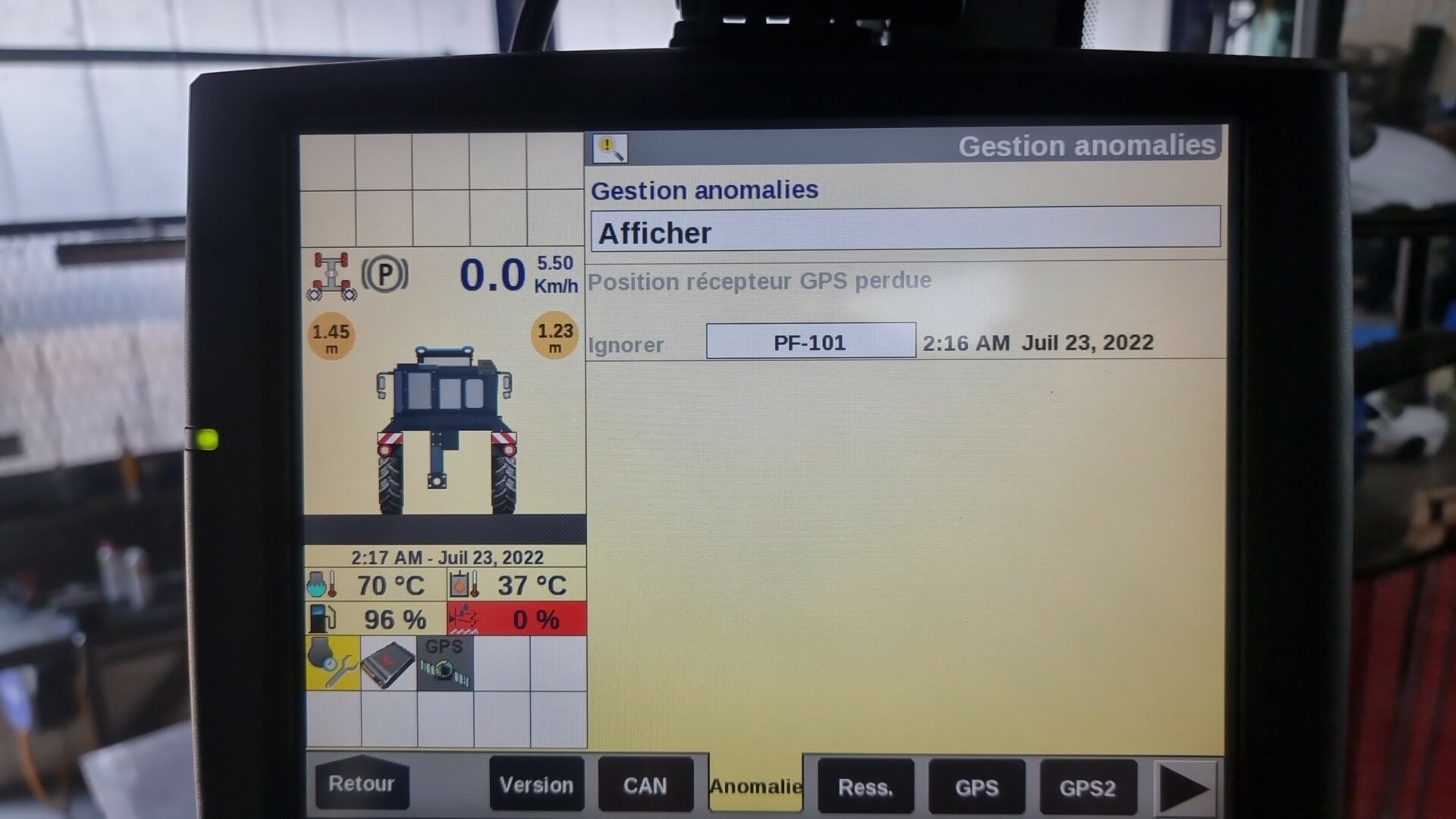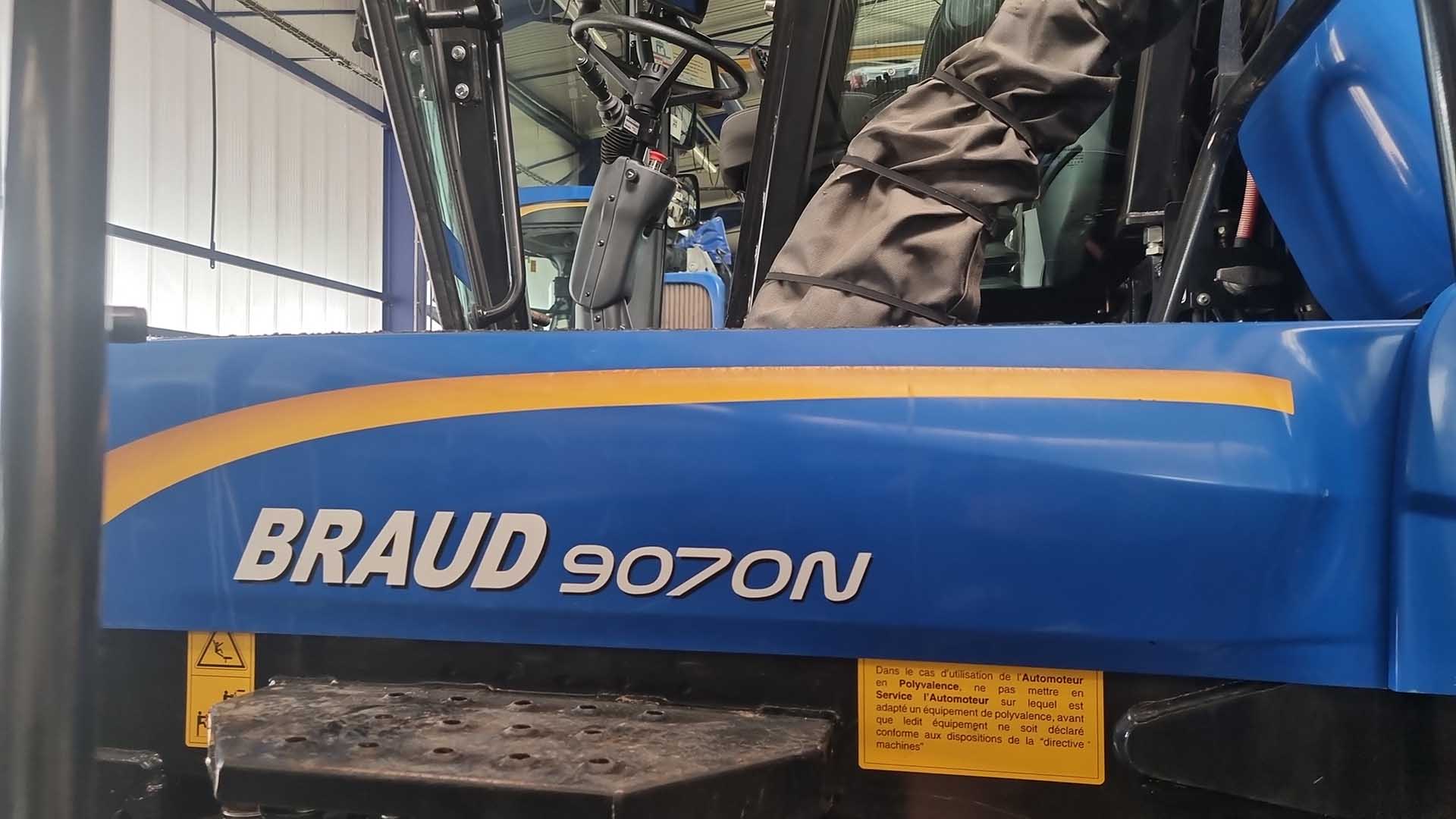Problem Adblue Braud New Holland 9070N Code A1219 SCR003
Adblue Braud 9070N problem: FPT CNH Industrial engine
Summary of the situation
On this New Holland Braud straddle, equipped with the FPT engine with ECOBlue™ SCR (selective catalytic reduction) technology, we encountered a problem concerning various faults on the SCR system. To begin with, various fault codes that we will tell you about, then their probable cause, possible resolution methods, as well as the possibility of permanently solving the problem.
The fault codes in question
They are multiple and prevent the total operation of the vehicle.
We encounter different fault codes on this machine The SCR code 007 indicating an AdBlue injection anomaly and a reduction in torque, the A1219 code indicating an SCR fault which following this code lowers the engine speed and limits the speed to 7km /h, code 9AEA indicating CAN timeout error from DEF quality sensor, code 15AA indicating incorrect voltage at DEF temperature sensor (higher than expected), code 119A indicating a tank filling level sensor voltage fault (voltage too high). In addition, an SCR003 fault indicates a fault relating to the level of adblue in the tank (EMPTY).
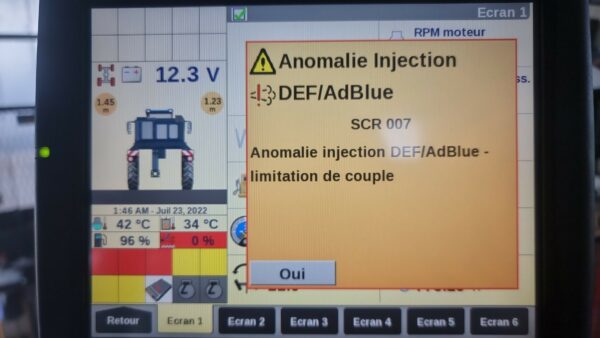
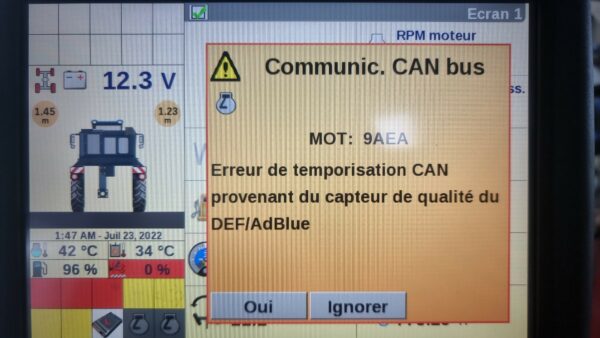
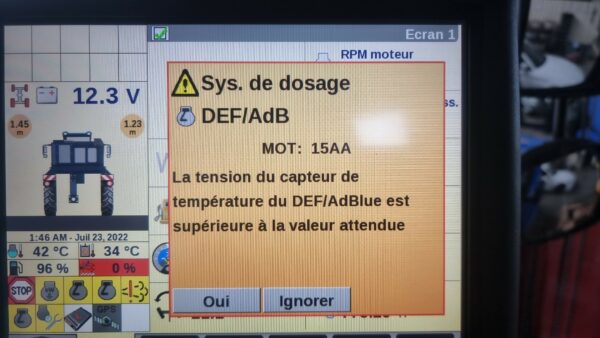
The fault codes in question
They are multiple and prevent the total operation of the vehicle.
We encounter different fault codes on this machine The SCR code 007 indicating an AdBlue injection anomaly and a reduction in torque, the A1219 code indicating an SCR fault which Possible causes of an Adblue Braud problem
Let’s first look at the 9AEA fault:
The 9AEA fault indicates a CAN timeout error from the DEF quality sensor. The CAN (Controller Area Network) system is a communication network used to exchange data between the various components of a vehicle. If the CAN system is not working properly, it can cause communication problems between the various components of the vehicle and affect its operation.
There are several reasons why the CAN system may not work properly and cause a 9AEA fault. Here are some examples of issues that can cause a CAN timeout error:
A damaged or faulty cable or connector
A faulty or improperly installed sensor
A problem with the engine ECU or another component of the CAN system
A CAN system software or configuration problem
Relationship between faults 9AEA, 15AA and 119A
It is possible that faults 9AEA, 15AA and 119A are all related to the incorrect operation of the Selective Catalytic Reduction (SCR) system of your Braud 9070N straddle. Fault 9AEA indicates a CAN timeout error from the DEF quality sensor, fault 15AA indicates an incorrect voltage at the DEF temperature sensor, and fault 119A indicates a tank fill level sensor voltage fault. If these sensors are not working properly, it can affect the operation of the SCR system and cause problems with the machine.
Surges at sensors can actually cause problems with the Controller Area Network (CAN) and lead to timeout errors. The CAN network is a communication network used to exchange data between the various components of a vehicle. If a sensor sends data with an incorrect voltage to the CAN network, this can disrupt the communication between the different components and cause timing errors with, for example, ‘timeouts’.
Power surges can be caused by several factors, such as a problem with the sensor itself, a damaged cable or connector, or an electrical overload from outside. If you suspect that sensor surges may be the cause of timeout errors on the CAN network.
Limitation of torque, engine speed and speed due to NOx control
Torque limitation and rpm drop is managed by the engine ECU, which can reduce engine power and rpm to protect the vehicle in the event of a breakdown or malfunction. The maximum speed limit of 7 km/h may be imposed by the speed control system, which may limit vehicle speed if there is a problem with the SCR system or other vehicle components.
Here are some logical steps that might help you resolve the described issues with your Braud 9070N straddle:
Check the AdBlue level in the tank and make sure it is sufficient. If the level is low, fill the tank with AdBlue.
Check the condition of the AdBlue injection pipe and make sure it is not blocked or damaged. If the hose is damaged, replace it.
Check the operation of the AdBlue tank fill level sensor and make sure it is working properly. If the sensor is faulty, replace it.
Check the configuration of the engine ECU and other components of the SCR system and make sure they are configured correctly. If necessary, reset the engine ECU or perform a software update.
If the problems persist, you may need to replace faulty or damaged SCR system components, such as the DEF temperature sensor or DEF quality sensor.
Check the electrical connections of the affected sensors and make sure they are sound and properly plugged in. Also check the condition of the cables and make sure they are not damaged or corroded.
Use a multimeter to measure the voltage across the affected sensors and compare the results to the voltage values specified by the manufacturer. If the voltage is lower or higher than the specified voltage values, it could indicate a problem with the sensor or associated cables.
Test the sensors with another measuring device, such as an oscilloscope, to verify their operation. If the sensors are not working properly, they could be faulty and should be replaced.
Check the voltage of the vehicle’s power supply and make sure it is stable and within manufacturer’s specifications. If the voltage of the power supply is unstable or abnormally high, it could affect the operation of the sensors and lead to incorrect voltages.
Check the harness completely.
And if after changing all these elements, it still does not work?
In our case, the owner changed many parts and sensors, checked the entire harness, checked the masses, but the problem persists and the vehicle has been in the garage for 6 months since it is impossible to use it. An Adblue Braud problem is responsible for the loss of turnover over 6 months and more ‘drastic’ solutions are necessary.
Total deactivation of the SCR system is therefore possible and avoids all these types of problems, especially when there is no longer any possible solution. Reprogramming the EDC17CV41 computer makes it possible to deactivate the entire adblue system and thus avoid the display of faults on the instrument panel. The sensors can also be disconnected, so AdBlue consumption will be zero and without apparent error. In addition, emission limitations such as speed, torque and engine speed restrictions will no longer be effective. However, during an adblue Braud problem, we take care not always to ensure safety related to engine operation but only to emissions.
After our intervention, no more faults are present in the memory of the engine ECU as you can see below.
